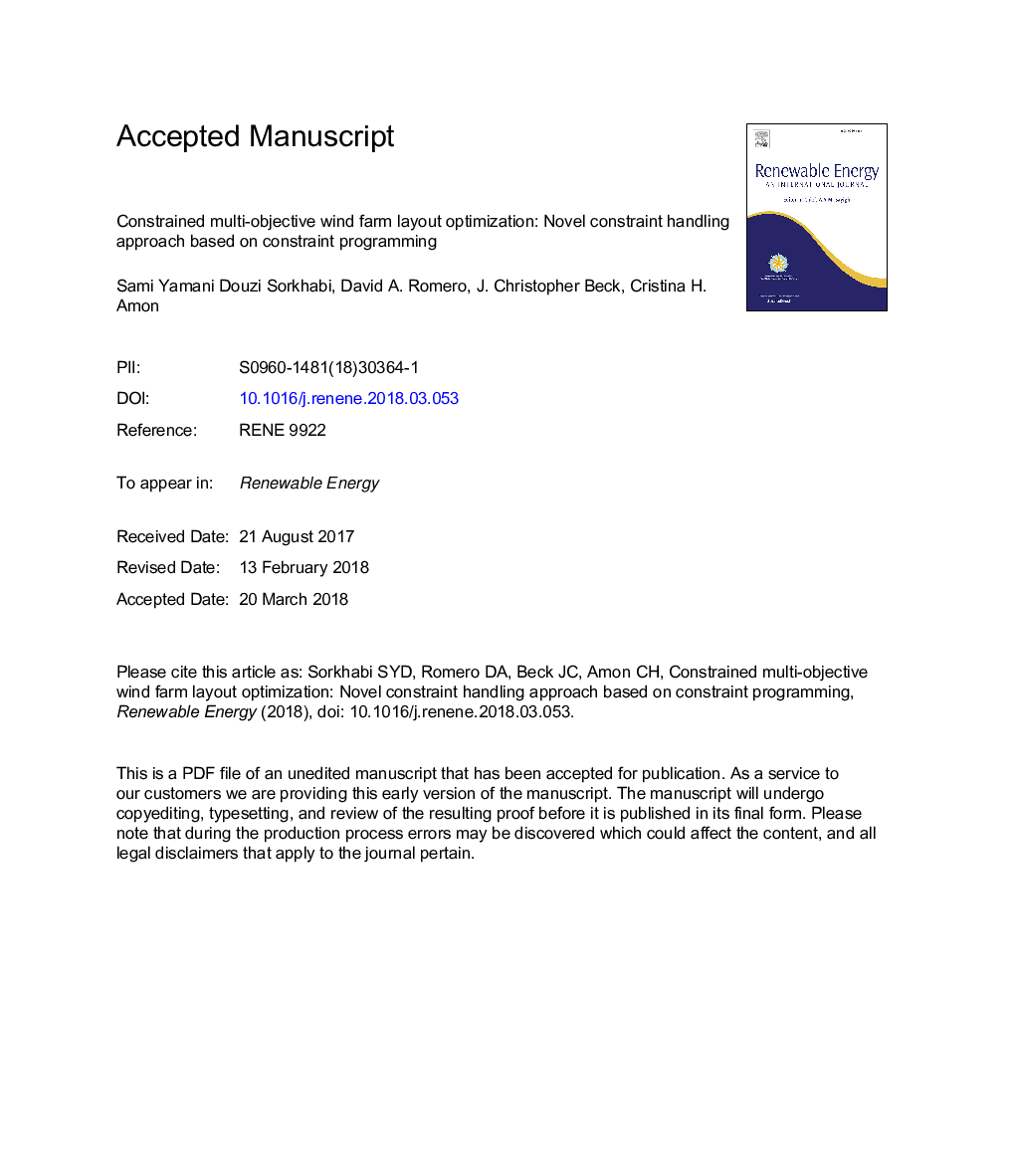| Article ID | Journal | Published Year | Pages | File Type |
|---|---|---|---|---|
| 6764248 | Renewable Energy | 2018 | 37 Pages |
Abstract
Wind farms are frequently located in proximity to human dwellings, natural habitats, and infrastructure making land use constraints and noise matters of increasing concern for all stakeholders. In this study, we perform a constrained multi-objective wind farm layout optimization considering energy and noise as objective functions, and considering land use constraints arising from landowner participation, environmental setbacks and proximity to existing infrastructure. A multi-objective, continuous variable Genetic Algorithm (NSGA-II) is combined with a novel constraint handling approach to solve the optimization problem. This constraint handling approach uses a combination of penalty functions and Constraint Programming to balance local and global exploration to find feasible solutions. The proposed approach is used to solve the wind farm layout optimization problem with different numbers of turbines and under different levels of land availability (constraint severity). Our results show increasing land availability and/or number of turbines, increases energy generation, noise production, and computational cost. Results also illustrate the potential of the proposed constraint handling approach to outperform existing methods in the context of evolutionary optimization, yielding better solutions at a lower computational cost.
Related Topics
Physical Sciences and Engineering
Energy
Renewable Energy, Sustainability and the Environment
Authors
Sami Yamani Douzi Sorkhabi, David A. Romero, J. Christopher Beck, Cristina H. Amon,
